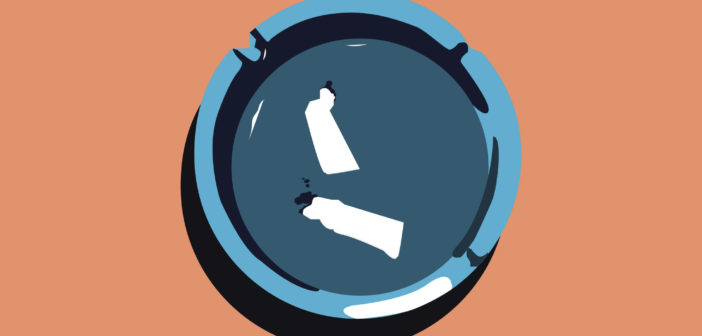Is that guy in your class using a flash drive or just charging his Juul? While it may be common to see students vaping or smoking cigarettes around campus, it’s less likely that you’ll see someone with a needle or a crack pipe. You’re probably rolling your eyes and thinking ‘well, obviously,’ but various types of drugs have been in vogue through the decades. From psychedelics to synthetics, most drugs have peaked in popularity — even if only for a few years.
1950s: The Marlboro Man is born
Before substantial research was done to show the dangers of smoking, the tobacco industry was thriving. Stars like James Dean and Audrey Hepburn made smoking look cool, and even today knowing how dangerous it is, admittedly there is something glamorous about a black-and-white picture of a movie star with a cigarette dangling from their lips. The normalization didn’t end in Hollywood, though. In 1954, Marlboro introduced a rugged cowboy as the face of their brand in an attempt to show how masculine their product was. From stars to cowboys to everyday Americans, everyone was inhaling nicotine.
1960s: Turn on, tune in, drop out
Tie-dye, peace signs and bong hits. While the ’60s bring to mind hippie culture and a whole lot of pot, marijuana wasn’t the only countercultural drug being used. Psychedelics like LSD and opioids like heroin were also popular among people looking to make a statement. Despite the belief that this decade was all about free love and reefer madness, drug treatment was relatively low given the commonness of its usage. Research from a 2002 Gallup poll even suggests that drug abuse was less pervasive than people believe, though drug use was one way people were rebelling against the Man.
1970s: The war on drugs
Following the free-for-all that was the 1960s, in 1971 then-President Richard Nixon declared that drug abuse was “public enemy number one.” To combat this, the Nixon administration started the “war on drugs” — a phrase still used today — by increasing funding toward targeting substance abuse, controlling drugs and introducing regulations, such as prison sentencing for drug-related crimes. In 1973, the Drug Enforcement Administration was founded to further fight this war. Despite the growing concerns about drug use, the 1970s saw an increased use of PCP.
1980s: Just say no
Freebasing crack cocaine may not sound as appealing as the often spiritual or political drug use in previous decades, but this drug became popular in the ’80s. Sold on the streets as “ready rock,” this form of cocaine is highly addictive. Following in the footsteps of the Nixon administration, then-President Ronald Reagan launched the Just Say No campaign in 1986 to combat drug use. However, celebrities like Richard Pryor, who infamously set himself on fire while using crack, were indulging in this drug, which normalized it for those outside of the limelight.
1990s: The panic in needle park
Even though the government tried to fight it, crack usage continued to spiral out of control in the ’90s. Beyond drug abuse, other serious problems arose from the increasing popularity of crack. Drug users were sharing unclean needles, which lead to massive HIV breakouts. New York City, for example, was hit hardest, with more than half of all drug users contracting HIV by the end of the decade.
2000s: The devil’s lettuce strikes again
With the severity of freebasing in the ’80s and ’90s, the 2000s saw a significant decline in crack usage. Marijuana returned as the most widely used drug and this time with a generally new attitude. In 2001, according to the American Addiction Center around 76% of drug users smoked pot, with 56% using this drug on its own. While these numbers may not reflect any change, the conversation around legalizing marijuana had shifted significantly over the years and is still ongoing today.

